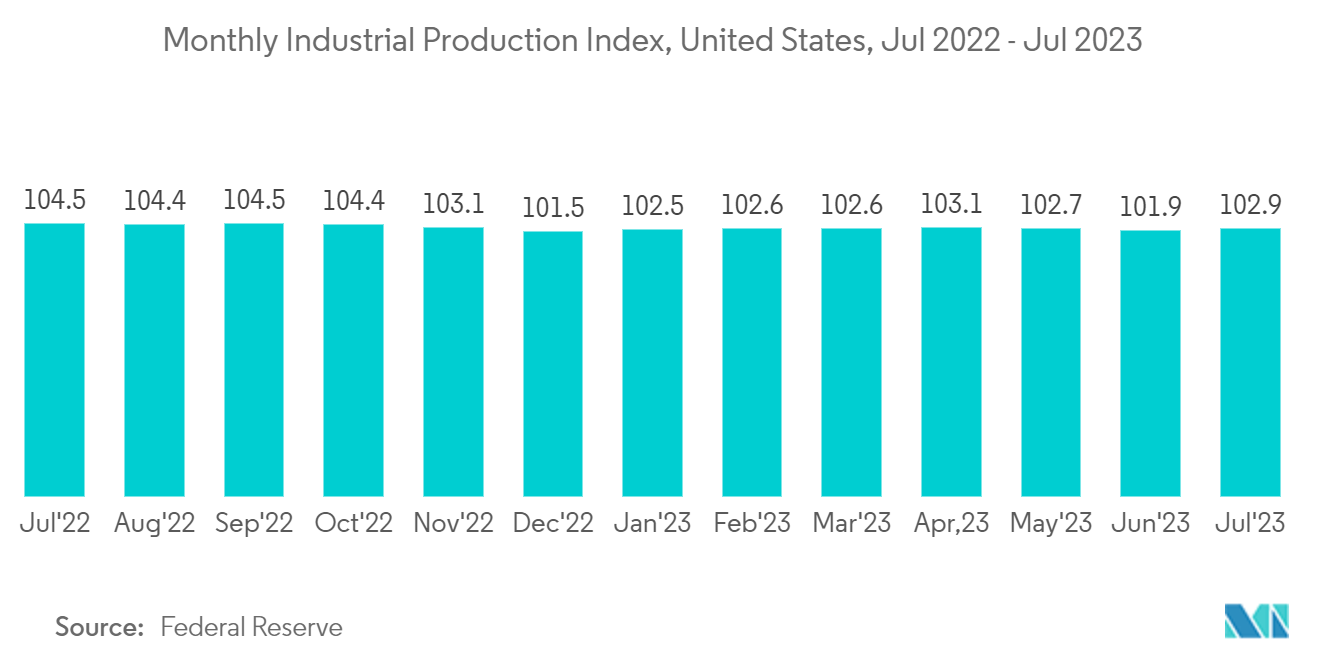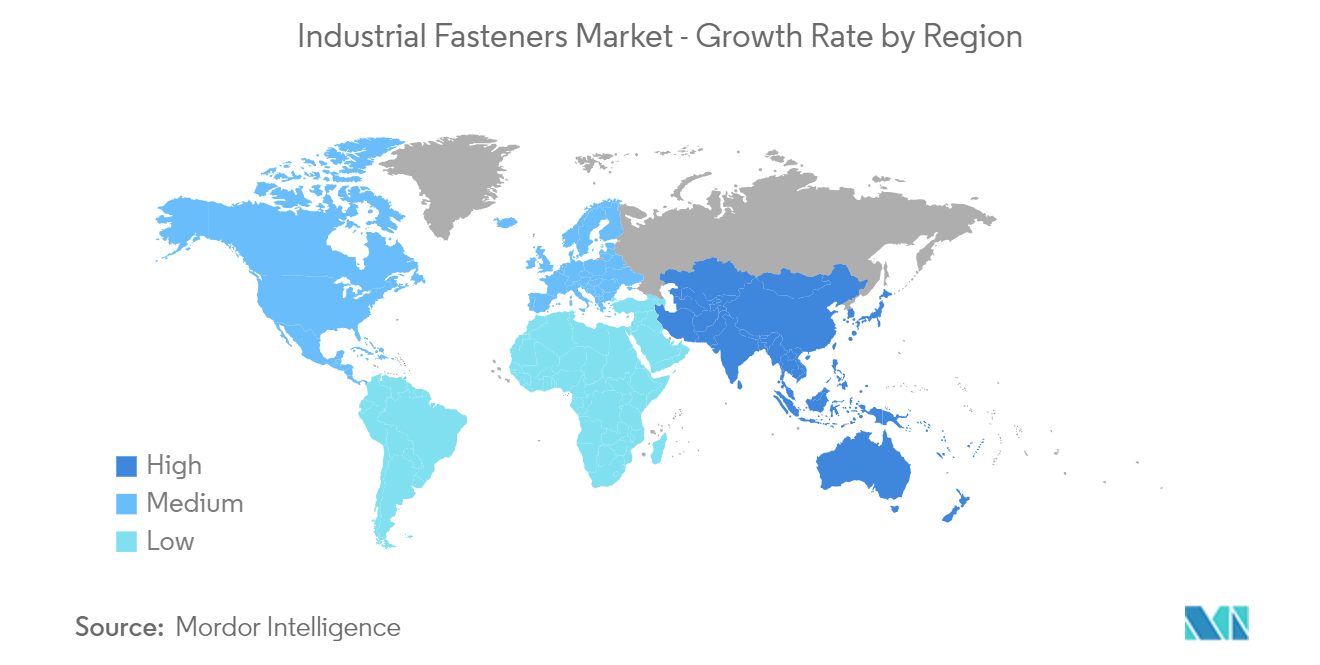Market Trends of Industrial Fasteners Industry
Metal Segment to Dominate the Market
- Metal fasteners are manufactured from various materials, such as steel, stainless steel, brass, aluminum, bronze, nickel, copper, titanium, and other non-ferrous metals. The selection of material by the end users is primarily based on considerations such as strength required, presence of corrosive environment, stresses, weight, electrical and magnetic properties, electrical, plating/coating required, expected life, and reusability.
- Metal fasteners can be manufactured using different fabrication methods, including CNC machining and cold heading. According to Boulons Plus & Precision Bolts, because of its inherent strength properties, workability, and relative cheapness compared to other materials, over 90% of fasteners are made from steel. Additionally, three types of steel are primarily used to manufacture fasteners: alloy steel and low and medium-carbon steel.
- Common stainless steels used for industrial fasteners include the 200, 300, and 400 series, out of which the 400 series is predominantly used as they offer high corrosion resistance with strength, wear resistance, and increased oxidation properties. These steel classifications are done based on their applicability by the American Iron & Steel Institute (AISI).
- The increasing activities across various sectors, such as manufacturing, construction, and automotive, drive the demand for metal industrial fasteners. For instance, according to the Federal Reserve, the manufacturing production index reached 102.9 in the United States in July 2023.
- The growing demand for metal fasteners encourages vendors to expand their presence further. For instance, in July 2023, Commercial Metals Company acquired EDSCO Fasteners LLC from MiddleGround Capital. EDSCO Fasteners is among the leading providers of anchoring solutions for the electrical transmission market, and its offerings include an engineered line of anchor cages, fasteners, and bolts that are primarily manufactured from rebar and used widely to secure high-voltage electrical transmission poles to concrete foundations.

The Asia-Pacific Market to Grow Significantly
- Several multinational and domestic players engaged in automotive, machinery, and Component Manufacturing Operations have increased the product demand across the Asia-Pacific. In addition, the key manufacturing hubs across India and China are further expected to foster market growth due to the rapid expansion of manufacturing operations in these countries.
- China is one of the largest producers and exporters of industrial fasteners in the region, owing to the presence of several small and medium-scale players. Industry players are investing in R&D and production of plastic and specialty fasteners to cater to application-specific demand by end-users and sustainably in the highly competitive market.
- In India, the demand for industrial fasteners is led by the strong growth in the automotive sector. Despite the challenges of the pandemic, the Indian automotive industry is recovering steadily, also benefiting from the increasing government investments and initiatives to support this sector.
- In addition, Manufacturing has emerged as one of the high-growth sectors in India. The Prime Minister of India launched the ‘Make in India’ program to make India a global manufacturing hub. Thus, the demand for industrial fasteners will likely rise in the coming years. For instance, to support localization and reduce import dependency on the auto and other manufacturing sectors, the Indian government has been running several PLI (production-linked incentive) schemes.
- Japan is also a significant market for industrial fasteners in the Asia Pacific. According to the Fasteners Institute of Japan, The Japanese fastener industry comprises approximately 3,000 manufacturers that produce around JPY 1 trillion (USD 6.9 billion) of fasteners annually. Over the years, the solid economic growth in the region has also strengthened the market.



